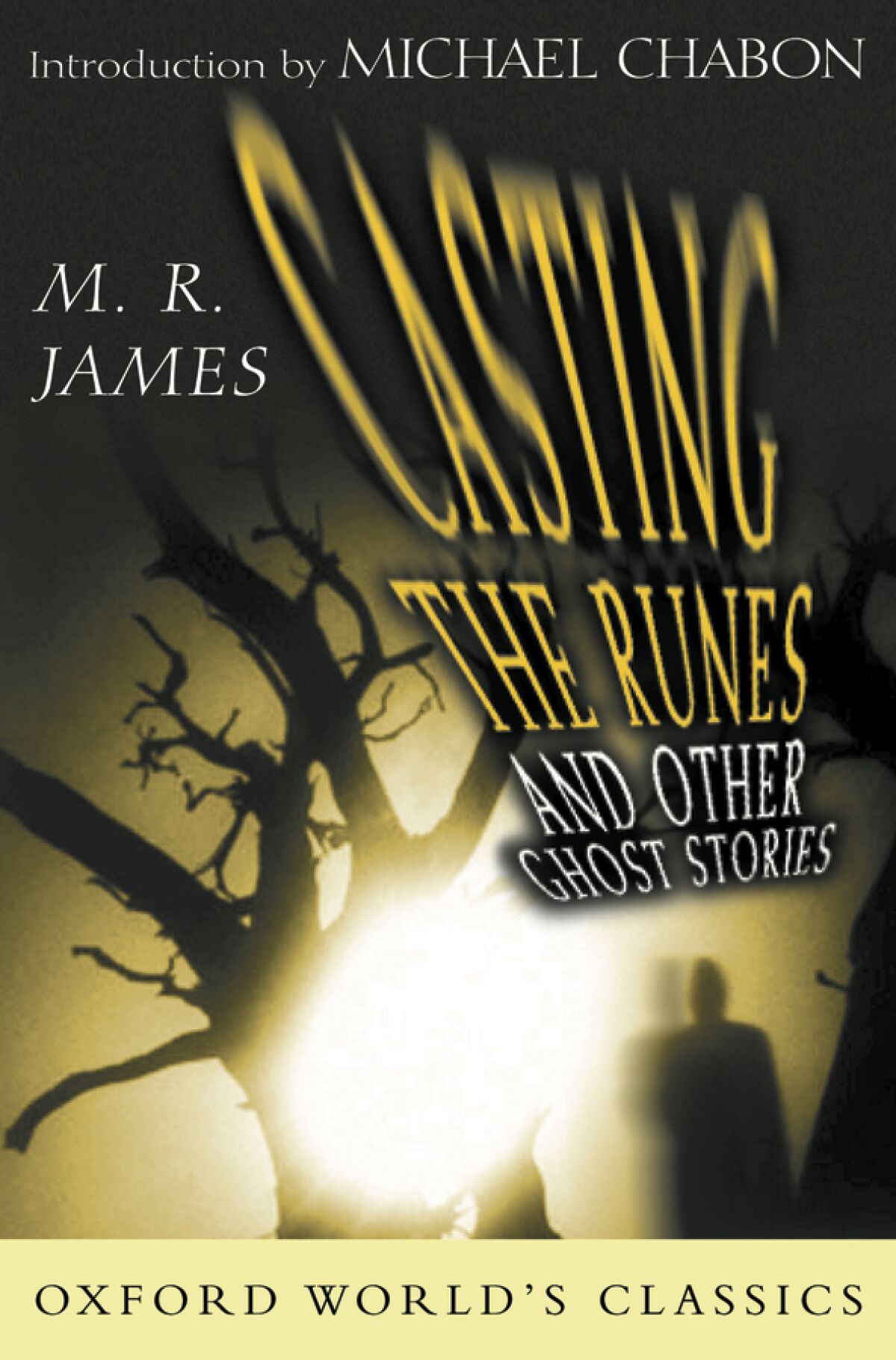Review
Silver Nitrate
By Silvia Moreno-Garcia
Del Rey: 336 pages, $28
If you buy books linked on our site, The Times may earn a commission from Bookshop.org, whose fees support independent bookstores.
Silvia Moreno-Garcia’s bestselling fiction is both widely varied and firmly rooted — tied to the culture of the Canadian immigrant’s native Mexico and tethered to the genres she has loved since childhood. Last summer’s “The Daughter of Doctor Moreau” nodded to H.G. Wells’ classic horror story and subsequent films while telling a female-centered tale of Mexico’s fraught colonial past.
In this summer’s treat, “Silver Nitrate,” Moreno-Garcia again deploys horror as a touchstone for a textured ghost story with surprising historical undertones while paying homage to a lesser-known progenitor of the form. True to her own method, she succeeds here by knowing when to follow the rules of genre storytelling and when to turn them upside down.
The novel’s epigraph, from “Casting the Runes” by early 20th century ghost-story pioneer M.R. James, sets the tone and structure from the start. James, whose admirers include H.P. Lovecraft, Paul Theroux and Stephen King, was so influential that his work has given rise to multiple theories of what constitutes a “Jamesian” ghost story. Many of them boil it down to several key elements. The three most pertinent: a quaint or ancient setting; a gentlemanly or scholarly protagonist; and the discovery of a mysterious object or book that attracts an unwelcome visitor from beyond the grave.
“Silver Nitrate” cleverly subverts that first Jamesian tenet by opting not for some prototypical English village but vibrant Mexico City, the location of many of her novels. There’s nothing quaint about this modern Mexican story of friendship and unrequited love against the backdrop of a changing industry. Montserrat Curiel is devoted to three things — her car, horror movies and her best friend, Tristán Abascal. Ostracized as children because of her limp and his diminutive size, Montserrat and Tristán formed an immediate bond, spending hours watching old horror films in Mexico City’s grand movie palaces. Their passion led them both to the film industry, with varying levels of success.
By 1993, Montserrat’s a tart-tongued sound editor seven years into a freelancing stint at Antares, a second-tier studio. “The editing business was a boys’ club,” she notes with dismay. “There were a few women working at studios writing scripts that were used for subtitling and dubbing. There were also female translators, though those were often freelancers who were contracted for single projects. But full-time female sound editors? Those were as rare as unicorns.”
Shut out of bigger studios, where nepotism reigns supreme, Montserrat fights her supervisor for assignments editing low-budget rip-offs of American horror hits and Mexican shock schlock destined for the home video market. Tristán, meanwhile, became a tall, handsome soap-opera star until a drug-fueled car crash killed his co-star and girlfriend Karina Junco, daughter of a well-connected television producer. The accident left him guilt-ridden, his face disfigured and his career derailed by Junco’s powerful father.
As Tristán finally gets a shot at a new role, Montserrat yearns to escape the long hours and meager pay by getting a permanent editing gig — or maybe producing her own pitch — at Enigma, a Mexican TV newsmagazine with content leaning toward the sensational. So when Tristán moves into a new apartment after a breakup and meets upstairs neighbor Abel Urueta, a director of some of the Golden Age horror flicks the friends adore, Montserrat hopes a story for Enigma about Urueta — an icon lost to the modern age — might be her ticket to something better.

“Casting the Runes,” by M. R. James, set the template for classic ghost stories, which Moreno-Garcia both honors and transforms.
(Oxford University Press)
Ulterior motives in place, the pair befriend the lonely old man. But Abel’s got his own agenda — enlisting the young horror aficionados into helping him finish his final horror film, “Beyond the Yellow Door.” Abel believes the movie, shot in 1961, is cursed; in the middle of filming, Wilhelm Ewers, a German emigré and occultist who co-wrote the screenplay, died in a mugging. The film lost its funding, with bad luck and accidents befalling the people who worked on it for years afterward. But the director kept a copy, shot on highly unstable silver nitrate film, in his freezer. He pleads with Montserrat and Tristán to help him reverse the curse by working with him to reconstruct the last scene.
When they accept the challenge, Moreno-Garcia upends the second element common to James’ ghost stories — the protagonist as a gentlemanly scholar. Tristán, vain and flighty, can hardly concentrate on anything but his career. And “even with her combat boots,” Tristán notes, “Montserrat barely grazed Tristán’s shoulder. She mostly looked like a tiny, ferocious elf.” But while the novel’s point of view toggles between the pair, it is Montserrat who drives the story. As she leads the investigation into Mexican film history and dissects Urueta’s stories, Montserrat pieces together Mexico’s real-life intersection with Nazi sympathizers and Hollywood, tracing the equally compelling stew of occultism, Aryan race theory and Hitler’s war effort that drove Ewers to Mexico.
When the aging director gives her a copy of Ewers’ book, “The House of Infinite Wisdom,” to help her understand the man behind the script, Montserrat learns more than she ever wanted or should about Ewer’s deep dives into racism and other dark arts.
As much as Moreno-Garcia carefully lays the groundwork for “Silver Nitrate’s” terrors by making real the film world inhabited by our unlikely trio, the final piece nailing her plot into place follows the third element common to James’ stories — the discovery of an old object and the supernatural wrath that follows.
As the ghosts and horrors accumulate, exposing the trio’s deepest fears and putting their lives at risk, “Silver Nitrate” gains momentum and power, just as Ewers did in constructing the labyrinth of runes, spells and curses that have dogged Urueta and his collaborators for some 30 years.
Several times in “Silver Nitrate,” a spirit commands, “Follow me into the night.” While the better part of us hopes Montserrat and her compatriots will refuse, there is simply no resisting the dark spells cast by Moreno-Garcia’s characters — nor those so expertly cast over readers by the author herself.
Woods is a book critic, editor and author of the Charlotte Justice mysteries.












